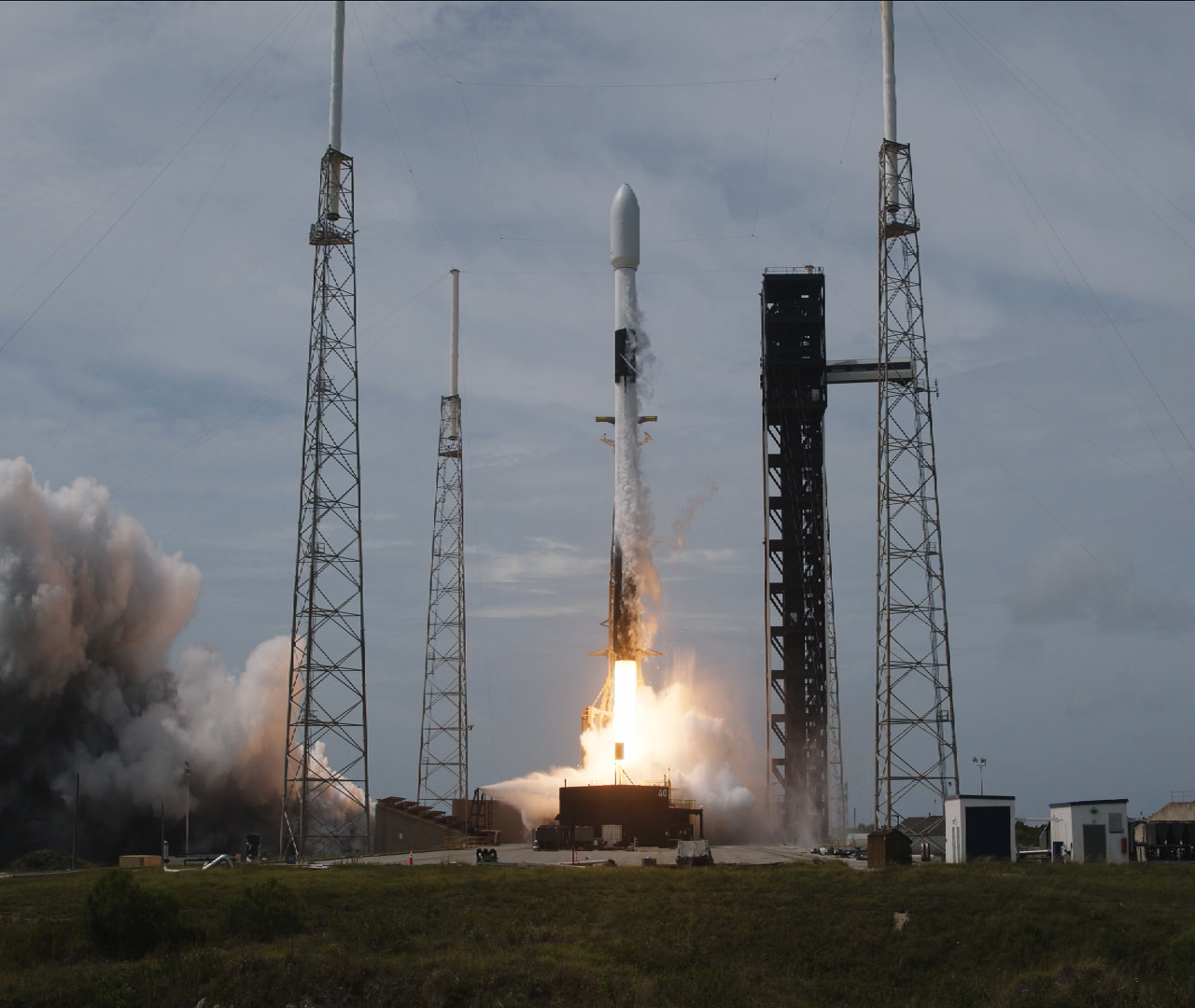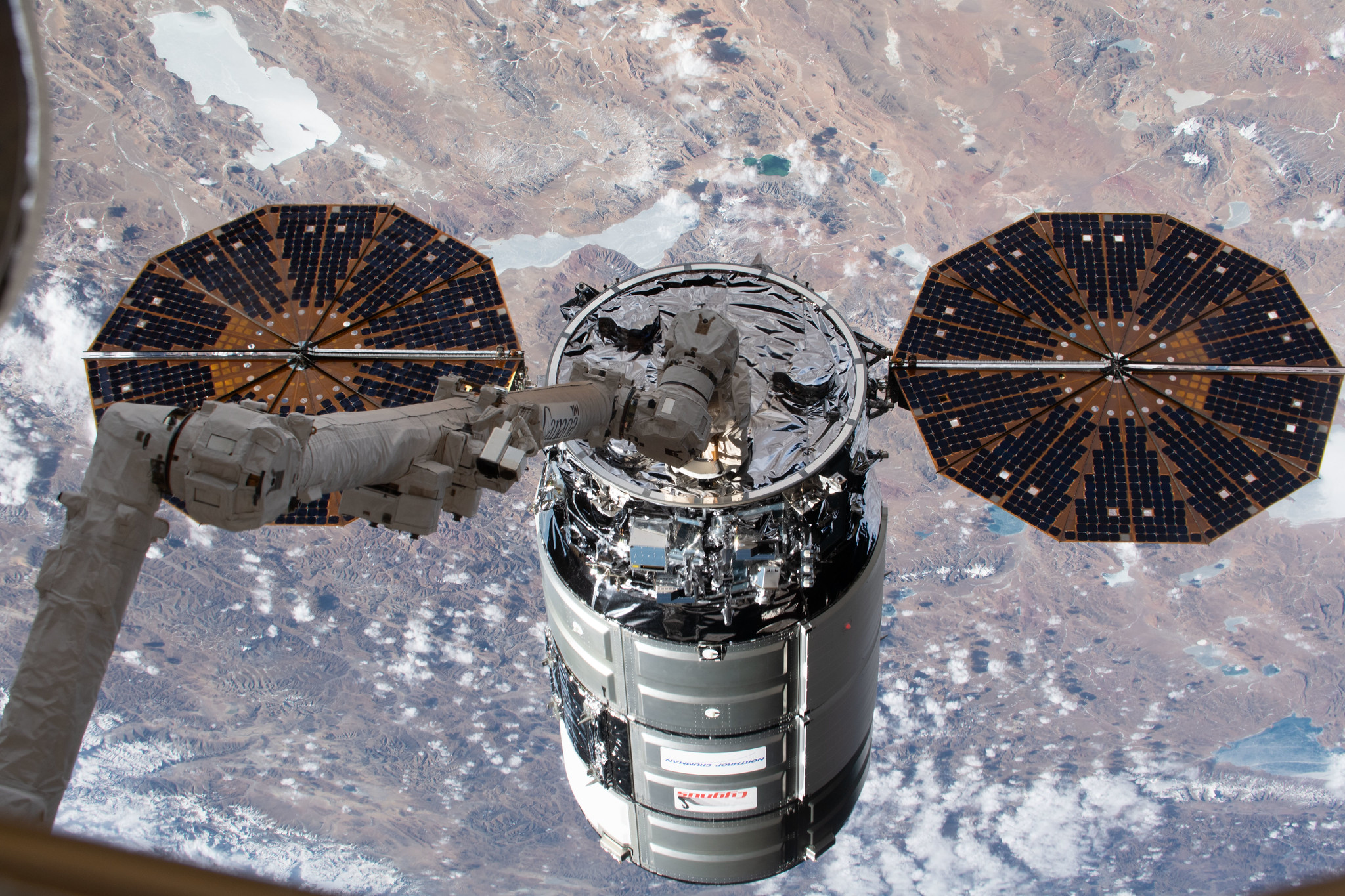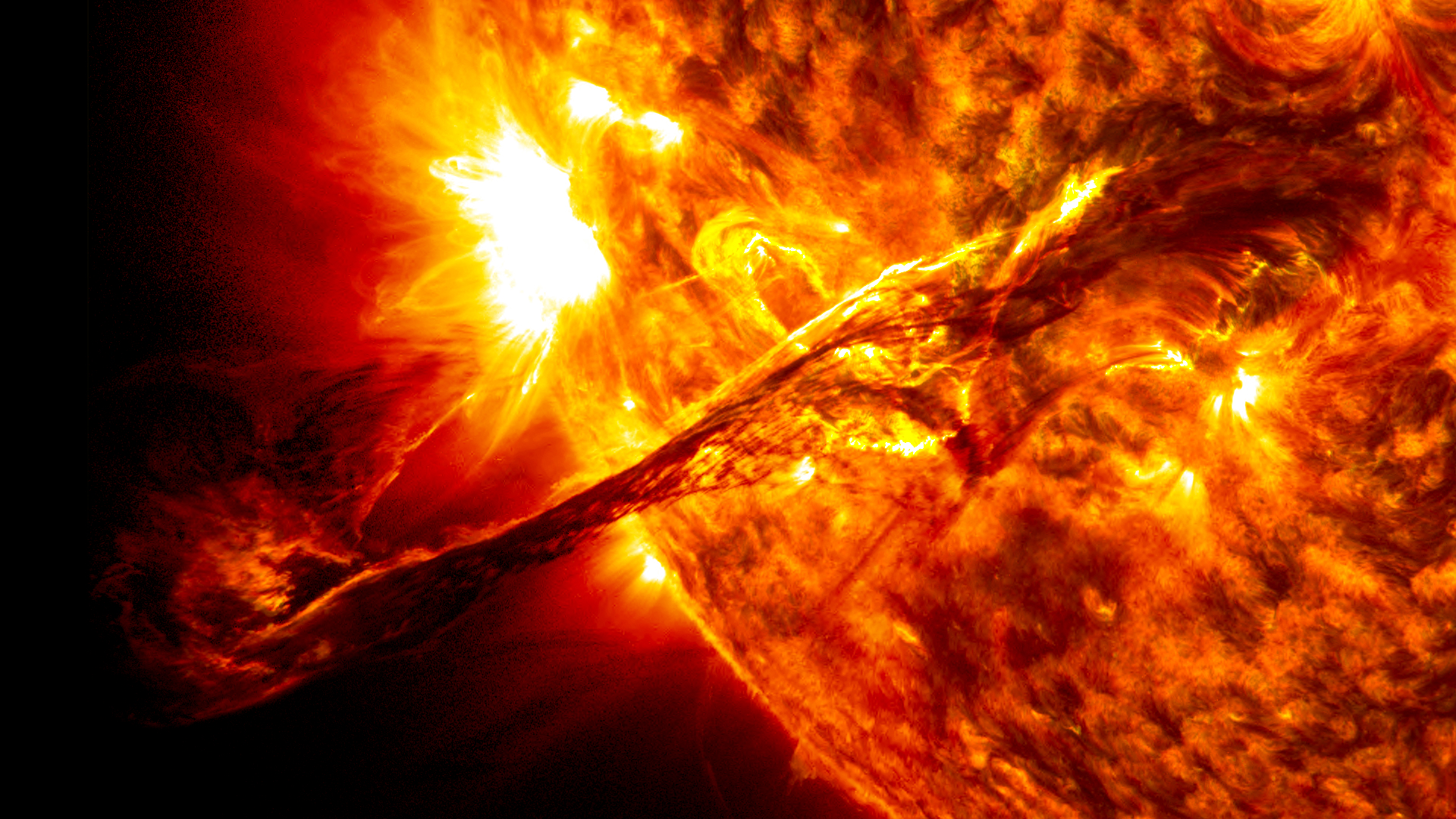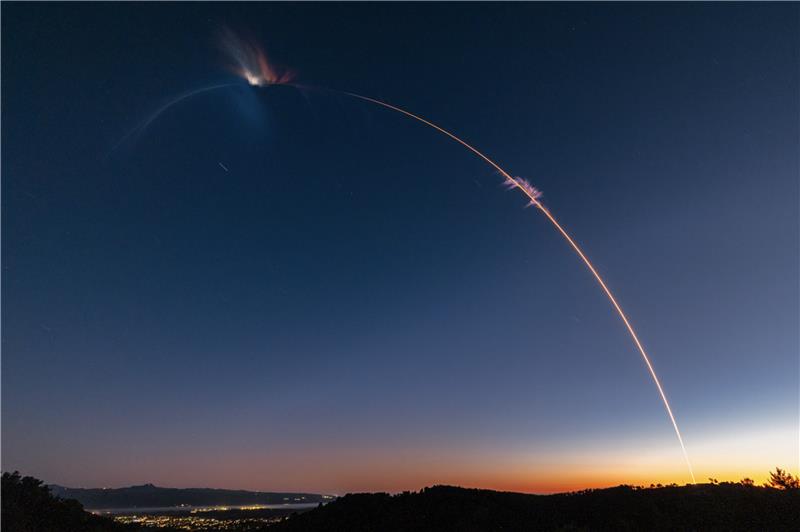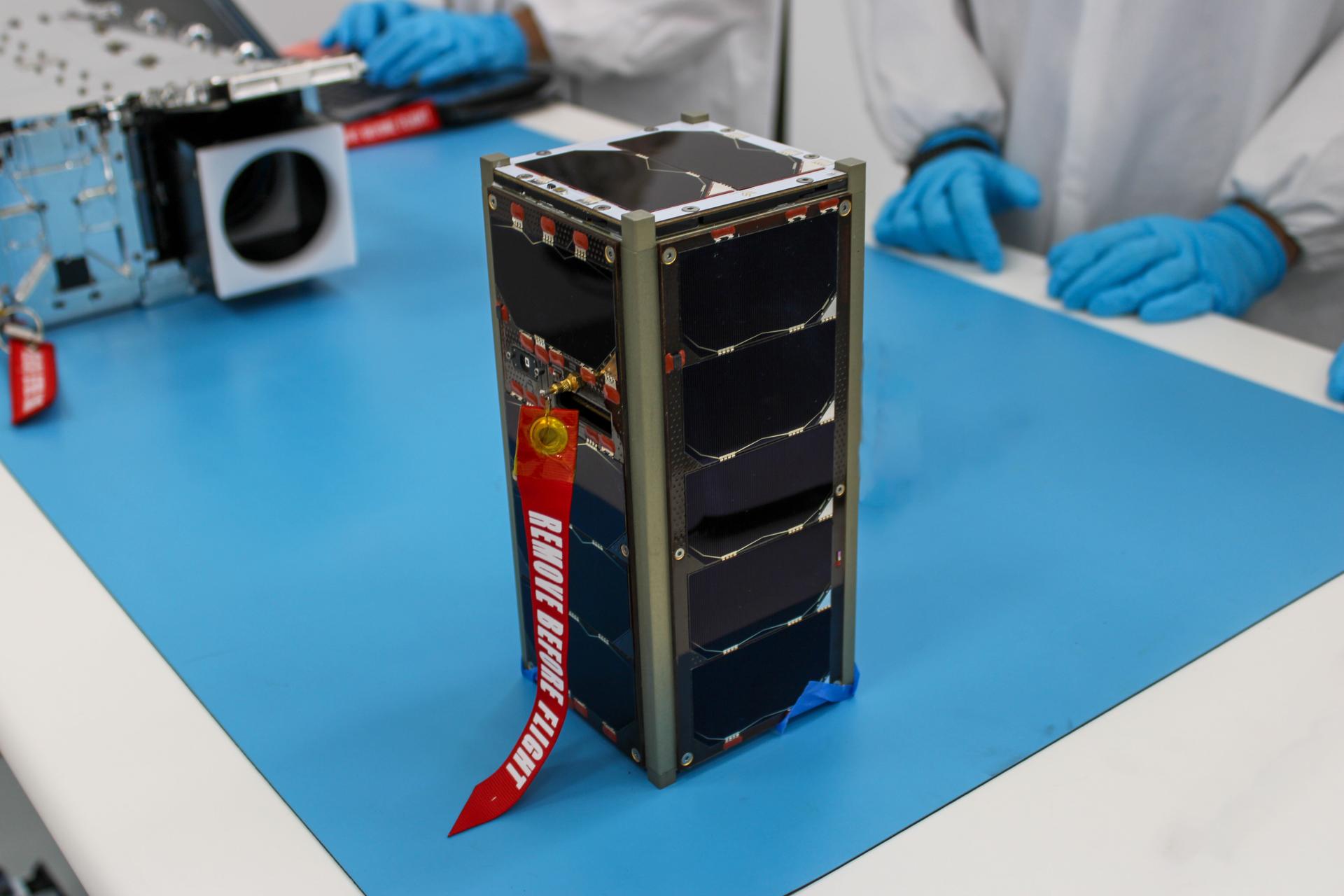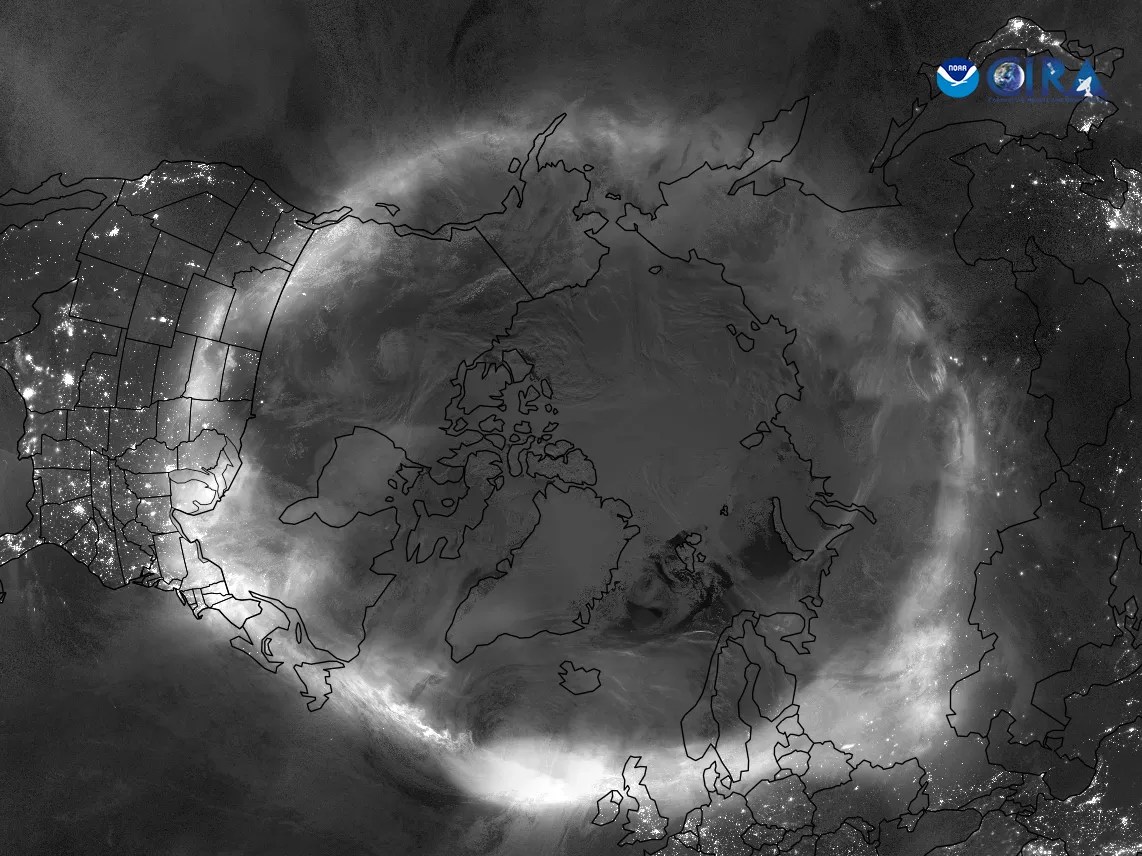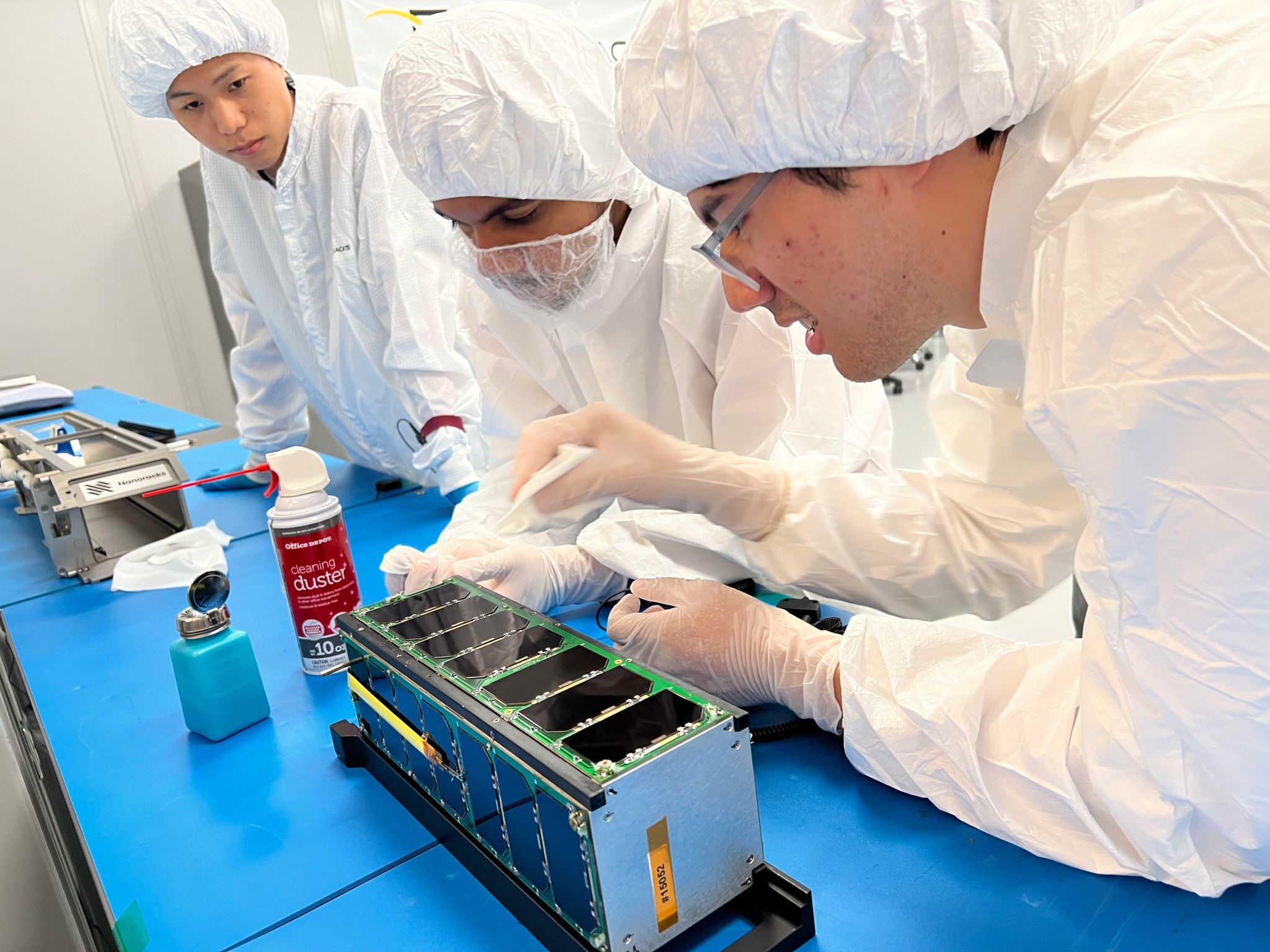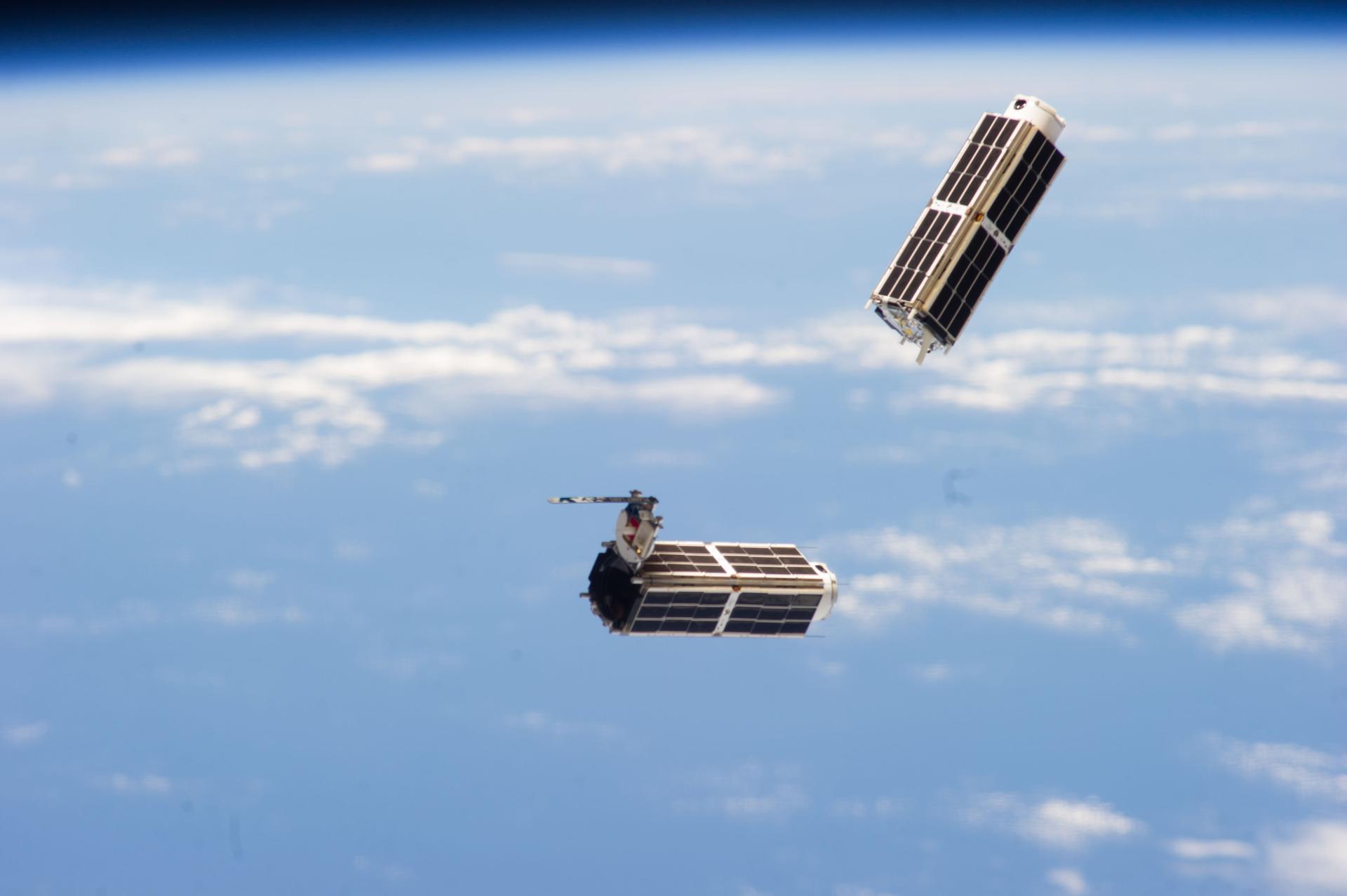Northrop Grumman’s Cygnus spacecraft for the company’s 21st commercial resupply services mission for NASA launched on a SpaceX Falcon 9 rocket from Space Launch Complex 40 at Cape Canaveral Space Force Station in Florida. Credit: NASA Following a successful launch of NASA’s Northrop Grumman 21st commercial resupply mission, new scientific experiments and cargo for the agency are bound for the International Space Station. Northrop Grumman’s Cygnus spacecraft, carrying more than 8,200 pounds of supplies to the orbiting laboratory, lifted off at 11:02 a.m. EDT Sunday on a SpaceX Falcon 9…
Read MoreTag: CubeSats
NASA Sets Coverage for Northrop Grumman’s 21st Station Resupply Launch
Northrop Grumman’s Cygnus spacecraft in the grips of the Canadarm2 robotic arm shortly after being captured at the International Space Station. Credit: NASA Editor’s Note: This media advisory was updated July 31, 2024, to reflect that the launch now is at 11:29 a.m. EDT on Saturday, Aug. 3. NASA, Northrop Grumman, and SpaceX are targeting 11:29 a.m. EDT on Saturday, Aug. 3, for the next launch to deliver science investigations, supplies, and equipment to the International Space Station. This launch is the 21st Northrop Grumman commercial resupply services mission to…
Read MoreNASA Mission to Study Mysteries in the Origin of Solar Radio Waves
3 min read NASA Mission to Study Mysteries in the Origin of Solar Radio Waves NASA’s CubeSat Radio Interferometry Experiment, or CURIE, is scheduled to launch July 9, 2024, to investigate the unresolved origins of radio waves coming from the Sun. CURIE will investigate where solar radio waves originate in coronal mass ejections, like this one seen in 304- and 171-angstrom wavelengths by NASA’s Solar Dynamics Observatory. NASA/Goddard Space Flight Center Scientists first noticed these radio waves decades ago, and over the years they’ve determined the radio waves come from…
Read MoreEight CubeSats Lift Off for NASA on Firefly Aerospace Rocket!
Firefly Aerospace’s Alpha rocket leaves a glowing trail above the skies of Vandenberg Space Force Base in California on July 3, 2024. Photo credit: Firefly Aerospace/Trevor Mahlmann As part of NASA’s CubeSat Launch Initiative, Firefly Aerospace launched eight small satellites on July 3 aboard the company’s Alpha rocket. Named “Noise of Summer,” the rocket successfully lifted off from Space Launch Complex 2 at Vandenberg Air Force Base in California at 9:04 p.m. PDT. The CubeSat missions were designed by universities and NASA centers and cover science that includes climate studies,…
Read MoreNASA’s ELaNa 43 Prepares for Firefly Aerospace Launch
A Satellite for Optimal Control and Imaging (SOC-i) CubeSat awaits integration at Firefly’s Payload Processing Facility at Vandenberg Space Force Base, California on Thursday, June 6, 2024. SOC-i, along with several other CubeSats, will launch to space on an Alpha rocket during NASA’s Educational Launch of Nanosatellites (ELaNa) 43 mission as part of the agency’s CubeSat Launch Initiative and Firefly’s Venture-Class Launch Services Demonstration 2 contract. NASA NASA is readying for the launch of several small satellites to space, built with the help of students, educators, and researchers from across…
Read MoreStudying the Sun
5 min read Preparations for Next Moonwalk Simulations Underway (and Underwater) Science in Space: June 2024 The Sun wields a huge influence on Earth. Its gravity holds our planet in its orbit, and solar energy drives the seasons, ocean currents, weather, climate, radiation belts, and auroras on Earth. The solar wind, a flow of charged particles from the Sun, constantly bombards Earth’s magnetosphere, a vast magnetic shield around the planet. The Sun occasionally releases massive amounts of energy, creating solar geomagnetic storms that can interfere with communications and navigation and…
Read MoreNASA Invites Media to Learn About New Tech Mission Powered by the Sun
A new NASA mission is testing a new way to navigate our solar system by hoisting its sail into space – not to catch the wind, but the propulsive power of sunlight. NASA’s Advanced Composite Solar Sail System is led by the agency’s Ames Research Center in California’s Silicon Valley. The microwave oven-sized CubeSat is scheduled to launch aboard a Rocket Lab Electron rocket from the company’s Launch Complex 1 on the Mahia Peninsula of New Zealand. The launch window opens at 3 p.m. PDT on Tuesday, April 23 (10 p.m. UTC). Successful deployment and operation…
Read MoreNASA’s Tiny BurstCube Mission Launches to Study Cosmic Blasts
4 min read NASA’s Tiny BurstCube Mission Launches to Study Cosmic Blasts BurstCube, shown in this artist’s concept, will orbit Earth as it hunts for short gamma-ray bursts. NASA’s Goddard Space Flight Center Conceptual Image Lab NASA’s BurstCube, a shoebox-sized satellite designed to study the universe’s most powerful explosions, is on its way to the International Space Station. The spacecraft travels aboard SpaceX’s 30th Commercial Resupply Services mission, which lifted off at 4:55 p.m. EDT on Thursday, March 21, from Launch Complex 40 at Cape Canaveral Space Force Station in…
Read MoreNASA Selects New Round of Candidates for CubeSat Missions to Station
Students from the University of Michigan work on their Measurement of Actuator Response and In Orbit (MARIO) CubeSat which launched to the International Space Station in November 2022. Photo credit: University of Michigan NASA selected 10 small research satellites across eight states to fly to the International Space Station as part of the agency’s efforts to expand education and science opportunities, support technology advancement, and provide for workforce development. These small satellites, or CubeSats, use a standard size and form measured in units. One unit (1U) is 10x10x11 centimeters and…
Read MoreNASA, DOD Seek Universities to Develop CubeSats for Launch
A set of NanoRacks CubeSats is photographed by an Expedition 38 crew member after the deployment by the Small Satellite Orbital Deployer (SSOD). The CubeSats program contains a variety of experiments such as Earth observations and advanced electronics testing. NASA NASA is collaborating with the U.S. Air Force and U.S. Space Force to offer a set of hands-on learning engagements that will help higher education institutions, faculty, and students learn more about what it takes to build small satellites and be selected for flight opportunities. Teams selected for the University…
Read More